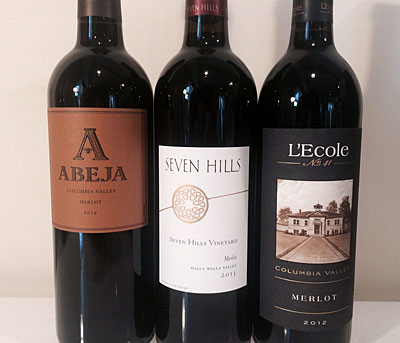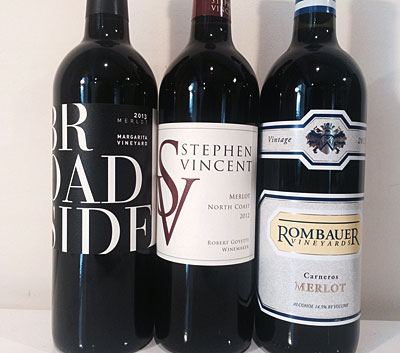| October 2015 | ||
| « Aug 2015 | News | Nov 2015 » |
October 28, 2015
A True American Story
Written by Kate Soto
The Zinfandel story is an American story. The grape ended up on the East Coast via an Austrian nursery, and then made its way west with the gold rushers of the 1850s. This is the grape of westward expansion. This is the grape that thrived in the new land. This is an immigrant grape without the fancy French pedigree of Cabernet Sauvignon. DNA evidence connects it to Puglia’s Primitivo, but it was originally an obscure (and ancient) grape from Croatia called Crljenak Kaštelanski. This is the small-time grape that made it big.
The wine world loves a fad, and the Zinfandel grape has certainly seen its share of rides on the rollercoaster of popularity. Much of this is thanks to the now-maligned but once-chart-topping “white”—rather, pink—version of wine made from this grape; but overplanted, overripe versions of the red didn’t help matters. In fact, it wasn’t until I had a bottle of Carlisle Zinfandel—as recently as last year!—that I had my Eureka moment with the grape, so deeply imbedded was my own prejudice. And I think this might be true for many consumers, who lump the red in with the “white” as a drink for neophytes. But oh! What they’re missing.
Spicy, spunky, peppery, brambly—the grape is a great balancing act of savory and fruity notes. When planted in hot climates and allowed to overproduce, it can be jammy and uninteresting. But when it’s planted in the right cool climate and well-pruned, there’s a wildness to it; an air of mystery. It can be a structured, intense play between light and dark. The grape is thin-skinned but robust, so it can be medium weight and airy or rich and voluptuous. What you find in the glass really can surprise you.
Thankfully, even the White Zin phenomenon had its purpose: it served to ensure that Zinfandel vines were maintained by growers during a time when Americans were gulping up white wines and winemakers were pulling out red vines to make way. Today, the availability of old-vine Zin, along with thoughtful, respectful winemaking, has helped the grape see a resurgence in respectability. The Wine Institute notes: “Zinfandel is the third-leading wine grape variety in California, with more than 48,000 acres planted and 469,216 tons crushed in 2013, according to California Department of Food and Agriculture. It is grown in 45 of California’s 58 counties. Promoted to the world by the state’s vintners for more than 130 years, Zinfandel has grown beyond cult status and is now internationally recognized due to the unique character and high quality wines that are produced only in the Golden State.”
It’s a good time to release Zin from the sins of its past and try the new wave of wines made from this humble and hearty grape.
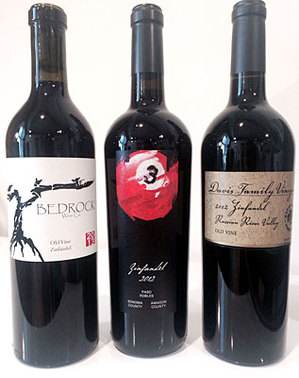 3 Ball 2012 Zinfandel, California
3 Ball 2012 Zinfandel, California
Surfer, punk rocker, former chef, and all-around wine bad ass Christian Tietje came to Zinfandel almost by default. He set out to make Pinot Noir, but couldn’t really afford to produce it. He gravitated toward Zinfandel, which, in his mind, was misunderstood (and which would seem to jive perfectly with the personality of someone whose motto is: “If we’re not pissing off 10 percent of the population, we’re not doing our job.”) 3 Ball is an ode to his three favorite appellations, culling the characteristics from each: sophisticated Sonoma, wild Paso, and rustic Amador, blended to create a killer bottle of red for a reasonable price. In the glass, it’s a pretty plum color with good light transparency. You get an immediate sense of red bramble fruit, which then moves to cranberry, tar, and something akin to tarragon or sage. It’s medium-bodied but spreads out on the palate, where it entertains sweet-savory yin yang, like salted caramel, beef broth, and licorice. This wine is broad and generous, with a unique, delicious funkiness to it.
Bedrock 2013 Old Vine Zinfandel, California
Morgan Twain-Peterson was raised at his father’s Ravenswood winery and grew up immersed in the world of wine. Legend has it he was a wine wunderkind; according to David Darlington’s book Angel’s Visits, that “Morgan, at the age of five, could distinguish between Merlot and Zinfandel.” He founded Bedrock in a 550-square-foot former chicken coop with the motto: “To dream big but keep production low!” He takes minimal winemaking to heart—“By bare minimum I mean handling fruit gently, in many cases using whole-clusters, and fermenting exclusively with the microflora that comes in with the grapes or is already present in the winery. I use a little new, excellent, French oak and rack as infrequently as possible. I strongly feel that picking the moment the flavors are there is the best way to express site. Thus, I tend to pick earlier than most.”
His Zin comes from vines that average 80+ years. With Carignane, Mourvedre, Grenache, Petite Sirah, Abouriou, and Aubun in the mix, it’s a proper field blend. It’s a dark purple with a lively pink rim. Aromas of pepper and a touch of funk start it off, then notes of bright, fresh-picked grapes and soft violet pastille. A complex dark cherry, kirsch, and black tea open up on the palate, then it ends on a firm, dry finish. This is a seductive wine—not va va va voom, but sexy librarian.
Davis Family 2013 Old Vine Zinfandel, Soul Patch Vineyard, Russian River Valley
Guy Davis studied to be a stockbroker, but decided he didn’t want to talk about money all day. After years in the restaurant biz, he turned his economics degree toward the wine industry. His first vineyard experience was with organically farmed Old Vine Zin at Sky Vineyard, and he got hooked. He and his wife opened their own venture in the 80s, and since then it has been truly a family project with sons Cole and Cooper, and young grandson Luke all in the mix. They are passionate about wine being an integral part of meals, of friendships, and of life. They grow gorgeous Pinots, Cabs, Rieslings, and Chardonnays as well, but there’s something truly special about their Zin. With vines planted in 1896—that’s 119 years, folks!—the depth of flavor and texture they achieve is astounding. In fact, I’d decant their 2013 before drinking, as it takes a bit of air to truly mine the depths. The medium-bodied wine is deep brick mahogany magenta, with a pretty nose of raspberries, plums, violet, bramble fruit, and pepper. With air, the red raspberry fruit shines, underlined by light floral notes. Palate shows licorice, currant, light caramel, and spice but becomes more red fruited with air, while maintaining licorice and tobacco leaf. It’s complex and very pretty, ending on a subtle vanilla bean note.
Alex Cooper Project 2011 Red, Doug Rafanelli Vineyard, Dry Creek Valley
Rodney Alex spent 20 years in the restaurant biz in Chicago; Rick Cooper spent 40 years in the music biz promoting records. With the help of good friend Guy Davis (see above), they were introduced to legendary vineyard owner Doug Rafanelli. Thus began their foray into making wine: with good friendships and killer grapes. These lucky grapes are hand harvested, gently destemmed, and then treated to a loop of John Coltrane’s A Love Supreme on loud speakers aimed directly into the tank while they are fermenting. Their Zin, which contains 5 percent Petite Sirah, is concentrated, deep, and dark as a late-night jazz club. Beginning with white pepper, plum, and tobacco leaves, it moves toward stewed blackberry jam with notes of lavender and sage and mocha, all in a high-acid, electric package. As the winery put it (and I can’t put it any better): “The mouthfeel is as silky as Lou Rawls on a first date.”
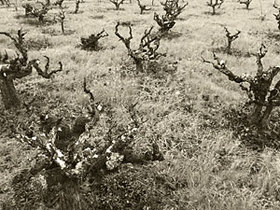 Valravn 2014 Old Vine Zinfandel, Sonoma County
Valravn 2014 Old Vine Zinfandel, Sonoma County
This is a new Sonoma County Zinfandel from our friends at Banshee. Baron Ziegler explains their inspiration, “When we moved to Healdsburg in 2013, I couldn’t believe how many backyard vineyards of old, bush pruned, Zinfandel vines there were canvasing the Dry Creek Valley. These vines are as old and impressive as anything I’ve ever seen in Europe, and immediately we set out on a scavenger hunt to try and find an old heritage clone vineyard of old vines that we could work with. We wanted to take advantage of this amazing raw material and see what we could do with it. In 2014 we were able to contract two vineyards that ranged in age from 50 to 105 years old. These are non-irrigated, dry farmed, own rooted Zin vines that yield around 3 tons/acre. These are the real deal…” This wine is new to Cream. Layers of richness and complexity are wrapped around a core of wild strawberry, raspberry, blackberry compote and hints of licorice-laced black pepper.
October 28, 2015
Highs and Mer-lots - Great Wine Transcends Fashion
Jack: “If they want to drink Merlot, we’re drinking Merlot.”
Miles: “No, if anyone orders Merlot, I’m leaving. I am NOT drinking any f&!king Merlot!”
(Sideways, 2004)
We need to talk about Merlot.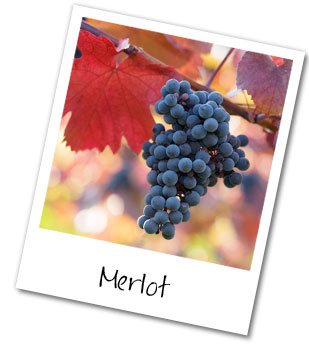 Voluptuous, sexy, friendly, extroverted—there’s a lot to like about this grape. And during the nineties, like it people did. It rose in popularity so fast and so furiously that “Merlot” became synonymous with “red wine” in the U.S., even outpacing sales of Cabernet Sauvignon. Many credit its rise to a 1991 60 Minutes episode called the “French Paradox” that suggested red wine was good for fighting heart disease. According to the Washington Post, “During the ensuing four weeks, red wine sales in U.S. supermarkets surged 44 percent (or 2.6 million bottles)….Merlot is the grape that boomed. It was easy for newcomers to pronounce and easier to drink as a cocktail than the leading red alternative, Cabernet Sauvignon, as it tends to be a little less acidic and astringent….The wine industry got behind the grape in a big way, and in California alone, acreage planted with Merlot increased from 8,000 acres in 1992 to 33,000 by the end of 1996.” (02/2005) By the mid-nineties, Merlot was indeed having a moment.
Voluptuous, sexy, friendly, extroverted—there’s a lot to like about this grape. And during the nineties, like it people did. It rose in popularity so fast and so furiously that “Merlot” became synonymous with “red wine” in the U.S., even outpacing sales of Cabernet Sauvignon. Many credit its rise to a 1991 60 Minutes episode called the “French Paradox” that suggested red wine was good for fighting heart disease. According to the Washington Post, “During the ensuing four weeks, red wine sales in U.S. supermarkets surged 44 percent (or 2.6 million bottles)….Merlot is the grape that boomed. It was easy for newcomers to pronounce and easier to drink as a cocktail than the leading red alternative, Cabernet Sauvignon, as it tends to be a little less acidic and astringent….The wine industry got behind the grape in a big way, and in California alone, acreage planted with Merlot increased from 8,000 acres in 1992 to 33,000 by the end of 1996.” (02/2005) By the mid-nineties, Merlot was indeed having a moment.
But, as so often happens with instant fame, Merlot’s reputation was soon on the road to ruin. Hyper demand led to overplanting, overirrigating, overfertilizing, and overpicking from immature vineyards. Like many a celebrity, the grape is fickle: it likes its soil cool, but too cool and it displays green, herbaceous characteristics; it needs sun, but too much and it loses its acid and structure. Many of the wines being produced during the boom were lackluster at best. As with all bubbles, Merlot Madness was soon showing signs of bursting.
Enter Sideways. By the time this 2004 movie made its infamous denouncement of the grape, consumers were ready to abandon ship—sales plummeted while Pinot, which the film waxed rhapsodic about, saw sales rise. According to the Napa Valley Register: “Prior to the initial release of “Sideways” on Dec. 18, 2004, Merlot was up to a 15 percent market share while Pinot Noir still held steady at 2 percent. After “Sideways,” things changed…Merlot sales had dropped to 12 percent while Pinot Noir sales had increased to 5 percent of overall wine sales.” (01/2012)
Poor Merlot! Yes it had made mistakes. But it was the victim of money-hungry producers who didn’t know how to handle its stardom. (Sonoma winery Gundlach Bundschu created a genius video about the rise and fall of this much misunderstood grape in America: https://youtu.be/6efO9ReiKQM) When given the right conditions, think of the great heights it can reach: it can display layers of dried, concentrated fruits plus chocolate, tobacco, and floral notes with a va-va-voom body, and, if lucky, the verve to back it up. Clay soils in Bordeaux’s Right-Bank St-Emilion and Pomerol regions are perfect for this grape: the clay stays cool and retains moisture, which crucially delays bud break for the early-ripening Merlot. There’s good reason that Merlot-dominant Chateau Petrus is one of the most lauded—and expensive—wines in the world. In fact, in Sideways, Miles’s most prized bottle of wine is ironically a 1961 Ch. Cheval Blanc, which is a blend of Merlot and Cabernet Franc, another varietal that he disparaged. So maybe instead of bemoaning the past, we think of this as a clearing of the slate. Bad Merlot has been, for the most part, kicked to the curb, leaving room for some truly interesting juice. In both Washington and California (Oregon is too cool), you can find Merlot that hits all the right notes: that time-honored Merlot hedonism, with a dash of street smarts. This is a grape that has seen highs and lows, and is now all the better for it.
Washington State
From L’Ecole on Washington State’s uniquely Merlot-friendly growing conditions: “For Merlot to strut its stuff it needs long, warm, sunny days to ripen matched with cool nights so as to retain its natural acidity and beautiful balance. Sitting at 46° latitude, Washington receives more than 17 hours of sunshine each day during the peak growing season and sees up to a 40° diurnal temperature swing once the sun goes down. It’s no secret that eastern Washington can be a windy place. That wind exposure stresses the vines and encourages them to grow thicker skins, resulting in more robust tannins and improved cellaring potential. Normally thin skinned, Merlot tends to plump up when exposed to water during the final ripening stages. Fortunately, we rarely see rainfall during harvest in Washington, and I believe this is a key reason we can make such extracted, aromatic, and beautifully balanced Merlots.”
L’Ecole No. 41 2012 Merlot, Columbia Valley
L’Ecole No. 41 is an institution in Walla Walla. It was the third winery to open in the region (1983), and only the 20th in the state. They have won the prestigious Winery of the Year in Wine and Spirits magazine a whopping 13 consecutive times. The 2012 has bright and buoyant acidity, which balances its deep concentration. It opens with notes of juicy plum, dried cherry, blueberry, mocha, caramel, and hints of violets. On the palate, it shows tobacco leaf and licorice. With a nice medium weight and long finish, this is a great steak wine.
Abeja 2012 Merlot, Columbia Valley
Deeply invested in Washington State viticulture, this small team of four adventurers creates rich, structured wines with sustainable practices (certified LIVE and Salmon Safe). Their wines are made from a combination of estate fruit and sourced from like-minded growers. The 2012 Merlot is dark garnet in the glass, with aromas of blackberry pie, vanilla, mocha, and iron. This is full-throttle palate-coating, and would be gangbusters with a blue-cheeseburger.
Seven Hills 2013 Merlot, Seven Hills Vineyard, Walla Walla Valley
Founder and winemaker Casey Mclellan has been making Seven Hills wine in Walla Walla since 1988, and this long history with his sites has put him on intimate terms with his fruit: “I have been fortunate in my many years as Seven Hills winemaker to have developed fruit sources where I harvest from the same rows-the same vines each year. This is a precious resource for us, knowing the vines and working closely with our growers, we can craft wines attaining the full potential of the grape.” The 2013 Merlot is a fiery blood red color, with attractive blood, cherry, earth, graphite, and pepper notes. There’s a light touch of vanilla and baking spice to this medium-bodied wine. The tannins are firm and grippy, with a nice acidity making it a good table companion. This is a tomato sauce Merlot, so grab a plate of lasagna.
California
California Merlot is what started the domestic craze. From Jancis Robinson: “American Merlot’s crucial characteristic is not its flavour but its texture which can be, and frequently is, described in one word - smooth. This is a wine to caress the palate, a wine that inspired that great new word in American wine jargon, ‘mouthfeel.’ What enabled this of course was the Californian climate. There was no argument, as in Bordeaux, about whether Merlot grapes would ripen fully. The grapes would, in the best examples, be picked as late as possible to achieve full, ‘physiological’ ripeness, picked not according analyses of their sugar and acid content but by whether the grapes had started to shrivel and their stalks to turn brown and woody.” (Wine Grapes)
Rombauer 2012 Merlot, Carneros
Opened in 1980, this family operation has great vineyard sources and cutting-edge technology. They use optical fruit scanners to separate absolutely perfect fruit from everything else. They use aerial infrared technology to map the vineyard canopies. Nothing but the highest quality fruit goes into their wines. The 2012 Merlot is plush and full, with distinctive savory notes of pepper, balanced by sweet blueberry and licorice on a velvety, but ultimately structured palate. Pair with lamb meatballs or mushroom risotto.
Stephen Vincent 2012 Merlot, Central Coast
Winemaker Robert Goyette brings five decades of experience to the table. After founding La Crema and working at Benzinger, his Stephen Vincent wines are geared toward exceptional quality at affordable prices. The 2012 hits the mark: full-bodied and busty, showing dried bing cherry, with a perfumey violet candy quality. There’s brown sugar and creme brulee sweetness on the palate. Acid is the key here, and draws everything together in harmony. Try beef stew.
Broadside 2013 Merlot, Margarita Vineyard, Paso Robles
Brian and Stephanie Terrizzi have a natural, minimalistic approach to winemaking. They harvest at lower sugars, use native yeasts, and little to no new oak. These are table wines, to be sure. The 2013 is exciting. It has the weight of a Cru Beaujolais and really shows Merlot in a more delicate form. On the nose, it expresses roses, pepper, cedar, and violets. It’s lovely and bright on the palate with notes of cranberry and raspberry. Vibrant and well done. Smoked salmon would pair well.
October 08, 2015
FEATURED: Choose
Your
Sangiovese
Adventure
You can’t talk Italian wine without talking Sangiovese. Versatile, finicky, and capable of ineffable heights, the most planted grape in Italy is also one of the world’s most important. Long gone are the days when vapid wicker-bottled Chiantis are the norm. Sangiovese is reigning strong, and its four most important appellations show just how responsive to terroir this grape is.
October 08, 2015
Caught Red Blended: Garcia + Schwaderer
 Vinography.com has declared this the Age of the Garagiste Winemaker in Chile. Jancis Robinson recently called the country one of the most important wine producers outside of Europe, saying, “In the last few years…a new generation of much smaller-scale, younger, iconoclastic producers has emerged which has turned its insouciant back on the tenets of old” (02/2015). At the heart of this new guarde is MOVI, a collective of smaller, “human-scale” wine producers who are committed to quality-driven independent projects. You specifically cannot be part of a big Fortune 500 company to participate. Members are only chosen to be part of this supportive network after extensive tastings because MOVI members have to believe in other MOVIs’ wines. This is a movement against corporate wineries and towards interdependent relationships in the community; it’s a movement about people.
Vinography.com has declared this the Age of the Garagiste Winemaker in Chile. Jancis Robinson recently called the country one of the most important wine producers outside of Europe, saying, “In the last few years…a new generation of much smaller-scale, younger, iconoclastic producers has emerged which has turned its insouciant back on the tenets of old” (02/2015). At the heart of this new guarde is MOVI, a collective of smaller, “human-scale” wine producers who are committed to quality-driven independent projects. You specifically cannot be part of a big Fortune 500 company to participate. Members are only chosen to be part of this supportive network after extensive tastings because MOVI members have to believe in other MOVIs’ wines. This is a movement against corporate wineries and towards interdependent relationships in the community; it’s a movement about people.
And at the heart of the movement is winemaking (and life) duo Felipe Garcia and Constanza Schwaderer. They opened their winery (Garcia + Schwaderer) on the cool slopes of Casablanca Valley in 2006, after getting fired from their jobs at corporate wineries for pursuing their side projects. From the beginning, they set out to craft wine as a statement of what they identify as Chilean wine. And that identity, as they see it, is fresh and vibrant, with varietal and vineyard character shining through. Their ‘Facundo’ red wine blend is an ode to this ethos. The majority of the blend is Carignan from 54-year-old, dry-farmed, bush-trained vines grown in the Central Valley DO—Chile’s oldest and most established wine region—rounded out with Cab (from Itata in the South), Cab Franc, Malbec, and Petit Verdot (all from Central Valley). The wine spends two years in barrel (10 percent new), so its weight is broad, and its blackberry and floral aromatics round toward chocolate and sweet tobacco on the palate, with an interesting undercurrent of graphite. Complex, pleasurable, and well-balanced, the 2010 took the gold medal in the Wines of Chile awards, 2013.
Casablanca Valley has been praised as an up-and-comer on the Chilean wine scene. Widely planted to vine as late as the mid-eighties, it’s the country’s fastest growing wine region, as well as its coolest. The nearby Pacific Ocean contributes a cooling influence (300 mornings of fog per year!). Located in the mid-section of Chile, about 50 miles north of Santiago, it’s also chock full of boutique wineries. As Thomas Jefferson said, “Every new generation needs a new revolution,” and this just may be ground zero for Chile’s.

